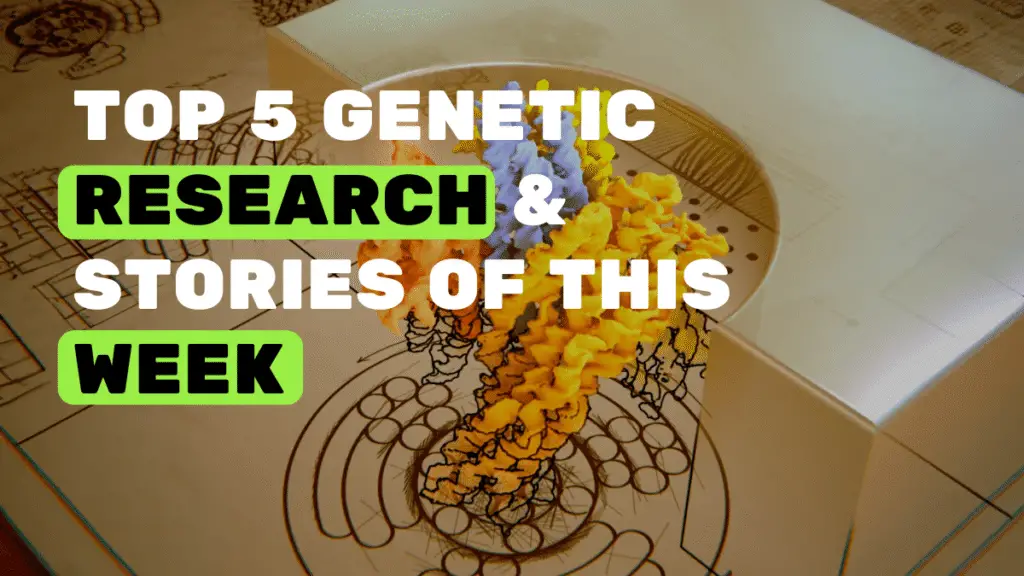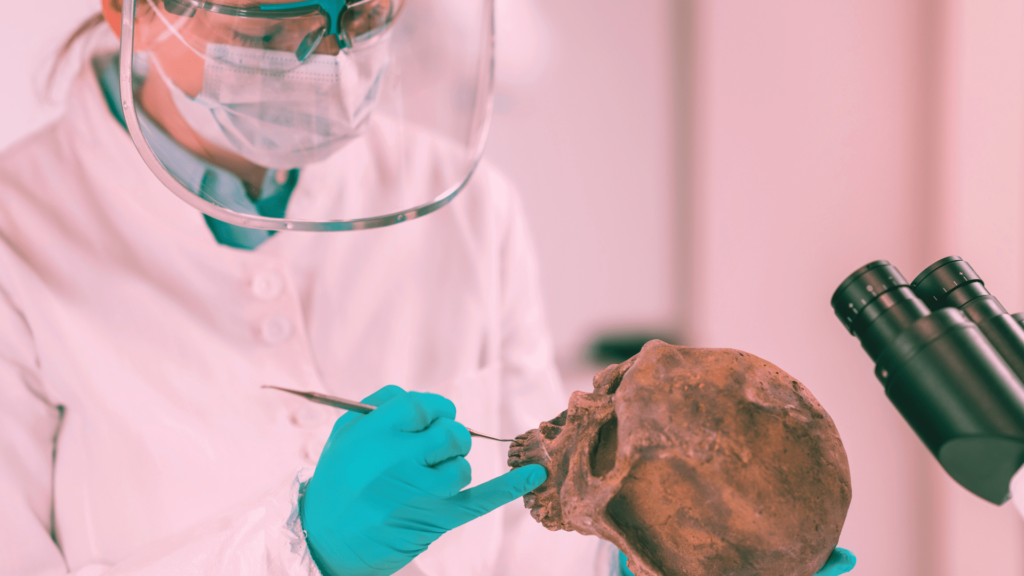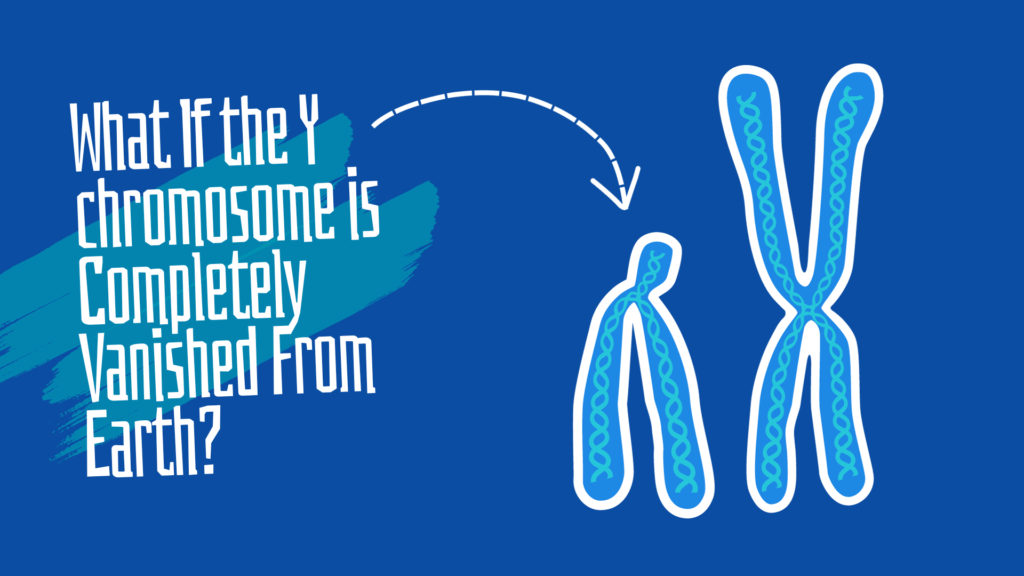Each week, we review the latest genetics research and share the most interesting stories with you. In this issue, we look at genetics research published between 29 September 2025 and 5 October 2025.
Key Topics:
DNA origami and its biomedical promise:
The concept of DNA origami was first introduced by Paul Rothemund in 2006. In this recent feature by Dr Priyom Bose published in AZoNano, the researcher reviewed the rapid progress of DNA origami nanotechnology, an approach that is the same as paper origami.
Now, here, the long single-stranded DNA molecules are folded into precise 2-D or 3-D structures. This DNA origami can be customised for drug delivery, biosensing and viral trapping.
To increase efficacy and decrease toxicity, anticancer drugs such as doxorubicin can be encapsulated in DNA nanostructures and released at specific sites. Researchers have also produced DNA “shells” that can trap viruses or act as extremely sensitive biosensors.
Since natural DNA can degrade rapidly in the body, one of the primary areas of current research is enhancing the durability of DNA origami in biological systems. New methods, including crosslinking, protective coatings, and more stiff designs, are being explored to extend the longevity of these nanostructures in vivo.
This review shows the potential of DNA origami as a transformative platform for nanomedicine.
Read the complete story here: DNA Origami: How This Nanotechnology Could Advance Medicine.
New finding in bacterial gene regulation:
Researchers from Bose University, Kolkata, Rutgers University, and the Walkman Institute, USA have worked on how bacteria regulate their genes.
Previously, it was believed that the sigma factor, that is the protein that initiates transcription, detaches from DNA polymerase once the RNA synthesis begins. This research, which was done on E. coli, suggested that the sigma factors were recycled immediately for new rounds of transcription.
The in vitro analysis also reveals that the sigma factor remains bound to the RNA polymerase throughout the elongation process. The team is presently focusing on Bacillus subtilis, a bacterium known for its resilience.
The results of this research change our understanding of bacterial transcription. This could reshape several approaches of microbiology, like tackling antibiotic resistance and harnessing bacteria for biotechnology applications like bioremediation and biofuel production.
Read the complete story here: Some bacteria hold onto their gene regulators: New study challenges long-standing belief.
Storing DNA data using heat as power:
Scientists from the California Institute of Technology have discovered a new way to power DNA-based computers using heat. DNA computers are molecular machines that process information through biochemical reactions.
The team here demonstrated that thermal cycling and controlled heating and cooling can reliably charge and recharge DNA circuits. By establishing weak bonds between DNA strands, they created systems that collect energy when heated and reset themselves when cooled—basically functioning as rechargeable molecular batteries.
In trials, the researchers showed that this method could perform at least 16 computing cycles on a DNA computer with over 200 molecules.
This work can open possibilities for sustainable DNA-based data storage and advanced biosensing.
Read the complete story here: DNA circuits store data — with heat as their power source.
The unique genetic makeup of India’s west coast Sindhis:
New genetic research has revealed that Sindhis living on the Konkan coast of India carry a distinct genetic composition from Sindhis living in Pakistan.
Using high-throughput sequencing and more than 600,000 DNA markers, the team found that while West Coast Sindhis share similarities with Burusho and Hazara-like communities in northern Pakistan, they also exhibit a distinctive East Asian genetic component that is lacking among Pakistani Sindhis.
Mongol migrations or historical mixing with neighbouring populations may have introduced this element. Additionally, the study found clear evidence of genetic integration with neighbouring Konkani populations, a sign of centuries of migration and intercultural contact along India’s west coast.
The findings of this research shed light on the complex demographic history of western India.
Read the complete story here: Sindhis along India’s west coast genetically distinct from Pakistani counterparts.
Mitochondria reject imperfect copies:
Unlike the nuclear DNA replication, mitochondria throw off the imperfectly replicated DNA copies into the cytoplasm, recent research reveals. Mitochondrial replication is different from nuclear DNA.
Here, if mitochondrial DNA doesn’t find the deoxyribonucleotides, it uses the ribonucleotides and synthesizes its DNA. Now, when it realizes the error, it eliminates the copy from the mitochondria into the cytoplasm.
This error is commonly reported in aged cells and the present research showed that it is associated with conditions like cancer and neurodegenerative diseases.
Read the complete story here: Mitochondria dump their rubbish DNA, and it could be costing our health.
Wrapping up:
That’s all for this week’s genetic research, stories and discoveries.
This is just a sneak peek into the world around genetics, latest research and findings. Read the previous edition of this series on our blog and subscribe to Genetic Education.
Note that the links for each original article are already provided; you can click and read the original article as well.
I hope that you enjoyed reading this. Stay tuned for next week.


